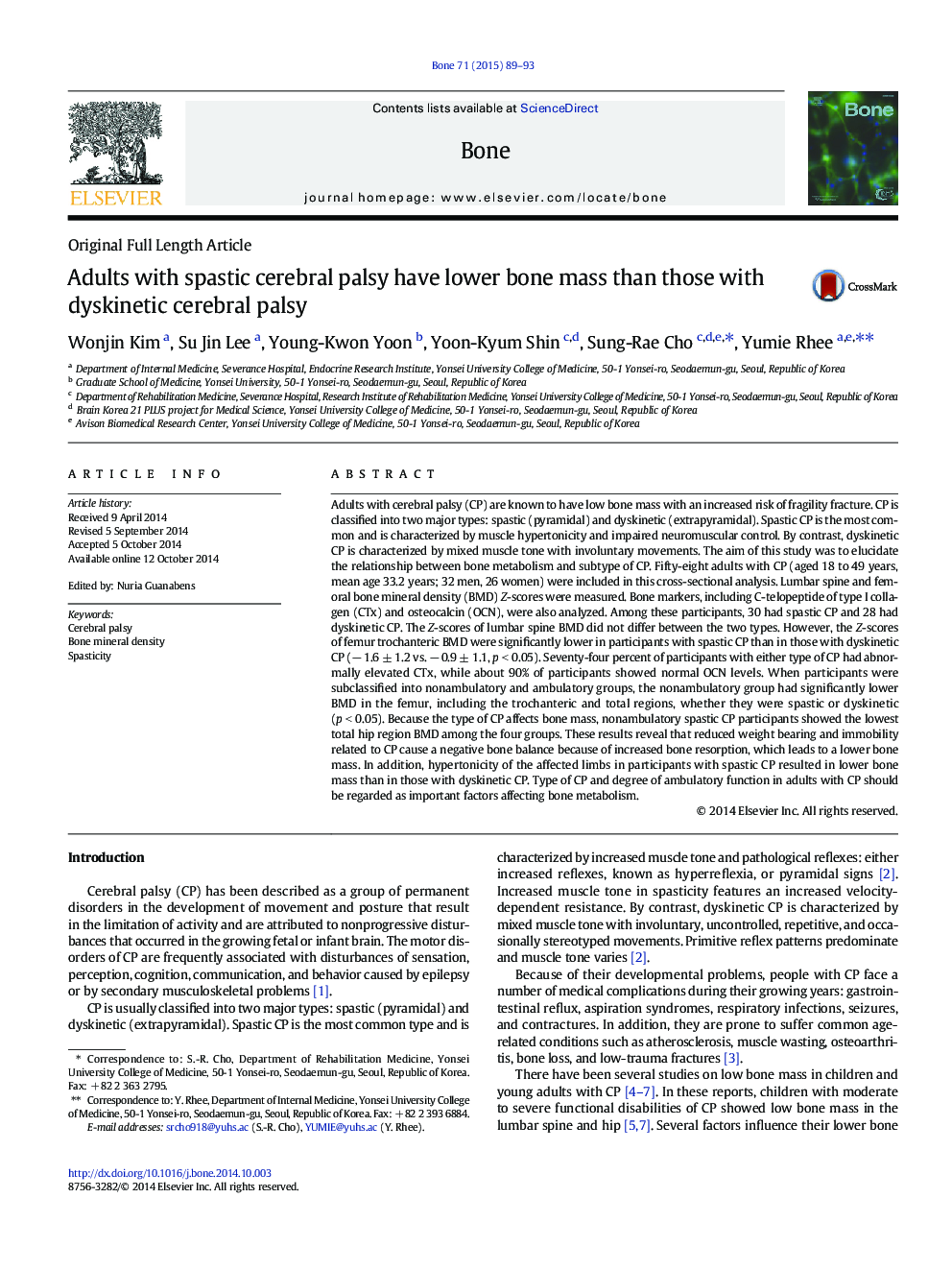| کد مقاله | کد نشریه | سال انتشار | مقاله انگلیسی | نسخه تمام متن |
|---|---|---|---|---|
| 5889799 | 1568148 | 2015 | 5 صفحه PDF | دانلود رایگان |
- Adults with spastic cerebral palsy (CP) showed more deteriorated bone mass than those with dyskinetic CP.
- Nonambulatory CP participants showed significantly lower BMD in the hip region than ambulatory CP participants.
- Reduced weight bearing and immobilization cause more bone resorption than bone formation, leading to lower bone mass.
Adults with cerebral palsy (CP) are known to have low bone mass with an increased risk of fragility fracture. CP is classified into two major types: spastic (pyramidal) and dyskinetic (extrapyramidal). Spastic CP is the most common and is characterized by muscle hypertonicity and impaired neuromuscular control. By contrast, dyskinetic CP is characterized by mixed muscle tone with involuntary movements. The aim of this study was to elucidate the relationship between bone metabolism and subtype of CP. Fifty-eight adults with CP (aged 18 to 49 years, mean age 33.2 years; 32 men, 26 women) were included in this cross-sectional analysis. Lumbar spine and femoral bone mineral density (BMD) Z-scores were measured. Bone markers, including C-telopeptide of type I collagen (CTx) and osteocalcin (OCN), were also analyzed. Among these participants, 30 had spastic CP and 28 had dyskinetic CP. The Z-scores of lumbar spine BMD did not differ between the two types. However, the Z-scores of femur trochanteric BMD were significantly lower in participants with spastic CP than in those with dyskinetic CP (â 1.6 ± 1.2 vs. â 0.9 ± 1.1, p < 0.05). Seventy-four percent of participants with either type of CP had abnormally elevated CTx, while about 90% of participants showed normal OCN levels. When participants were subclassified into nonambulatory and ambulatory groups, the nonambulatory group had significantly lower BMD in the femur, including the trochanteric and total regions, whether they were spastic or dyskinetic (p < 0.05). Because the type of CP affects bone mass, nonambulatory spastic CP participants showed the lowest total hip region BMD among the four groups. These results reveal that reduced weight bearing and immobility related to CP cause a negative bone balance because of increased bone resorption, which leads to a lower bone mass. In addition, hypertonicity of the affected limbs in participants with spastic CP resulted in lower bone mass than in those with dyskinetic CP. Type of CP and degree of ambulatory function in adults with CP should be regarded as important factors affecting bone metabolism.
Journal: Bone - Volume 71, February 2015, Pages 89-93
